Recent Posts
SERVPRO® Mold Remediation Service
4/17/2024 (Permalink)
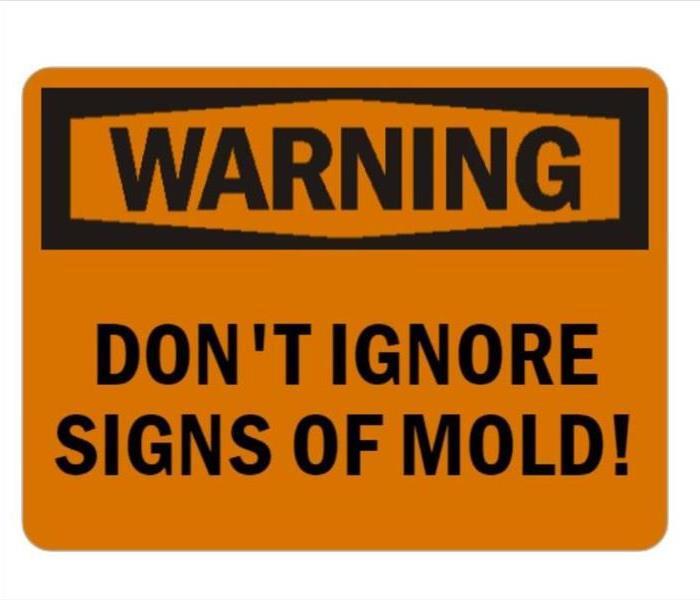 If you see or smell a mold problem, call SERVPRO of Deerfield Beach!
If you see or smell a mold problem, call SERVPRO of Deerfield Beach!
How can I tell if I have a mold problem?
Mold is a natural part of the environment. Mold reproduces from tiny spores and may start growing inside when these spores land on wet surfaces. Outdoors it helps nature break down dead organic materials like fallen leaves and dead trees. Indoor growth can be a problem.
The first indication of a problem is often when you notice a musty odor. You may see fuzzy or slimy patches on surfaces. Reducing moisture is the most effective technique to stop the growth of mold. If you try to clean up the mold without fixing the water problem, the mold problem will return.
Call SERVPRO of Deerfield Beach at 954-596-2208
for reliable mold remediation, abatement, & restoration.
If you see, smell, or suspect you have mold, call SERVPRO® today. Mold grows fast and the longer it grows, the more damage it can cause. Our IICRC certified technicians have the expertise to mitigate mold from your home or business quickly and discreetly. While every situation is different, in general mold remediation protocols will follow these steps:
Step 1: Call SERVPRO of Deerfield Beach: 954-596-2208
Step 2: Inspection and Mold Damage Assessment
Step 3: Mold Containment
Step 4: Air Filtration
Step 5: Removing Mold and Mold-Infested Materials
Step 6: Cleaning Contents and Belongings
Step 7: Restoration
SERVPRO of Deerfield Beach is locally owned and operated so we are nearby and able to respond immediately when you need us. We specialize in mold remediation, fire and water damage, specialty cleaning, and more. We work hard to provide quality remediation and restoration services, so that our customers can safely return to their homes and businesses and get back to normal life!
Call SERVPRO® for HVAC and Air Duct Cleaning
4/17/2024 (Permalink)
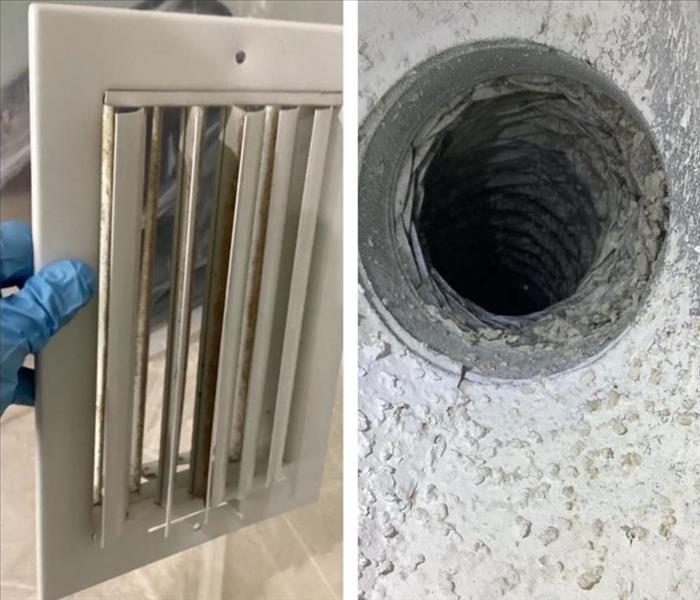 It’s time for HVAC and Air Duct cleaning by SERVPRO®
It’s time for HVAC and Air Duct cleaning by SERVPRO®
HVAC, Air Vent and Air Duct Cleaning
When was the last time you cleaned your HVAC system and air ducts? When your HVAC system circulates, the air ducts collect dirt, dust, and small airborne particles missed by your air filter. Did you know that in just one year a home can collect over 40 pounds of dirt, dust, and particles? Routine house cleaning takes care of most of it but you need a professional cleaning service like SERVPRO® to clean the air ducts!
Call SERVPRO of Deerfield Beach at 954-596-2208
for the best duct cleaning service for your home today
You should schedule routine air duct cleaning for your home if:
- You have pets living in your home
- You have allergies or asthma
- You smoke in your home
- Your home has suffered damage
- Your home has had renovations
The uniquely trained technicians at SERVPRO of Deerfield Beach follow the air duct cleaning process industry standards as defined by the National Air Duct Cleaners Association (NADCA). We use approved chemicals registered for use by the United States Environmental Protection Agency. We are dedicated to restoring air duct cleanliness to our homeowners and businesses in North Broward County and committed to providing the greatest service possible.
Fire Damage & Smoke Restoration Service
4/17/2024 (Permalink)
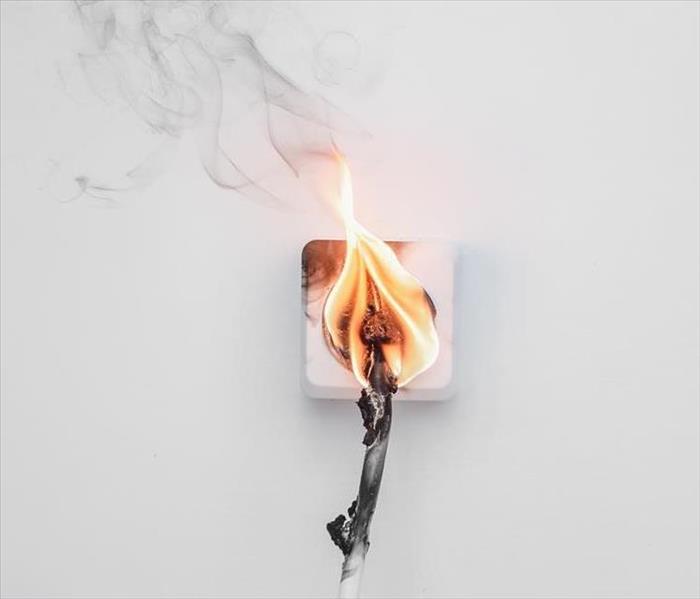 “Like it never even happened.”
“Like it never even happened.”
Call SERVPRO of Deerfield Beach at 954-596-2208
Faster to any size disaster™
SERVPRO of Deerfield Beach is here to help remediate disasters caused by fire. Whether you’re dealing with a home or office fire, we can help. Our goal is to make it “Like it never even happened.”
What does SERVPRO® do after a fire? Each fire damage event is different and requires unique handling, but the general process is the same. These are the usual steps taken:
- Emergency contact: the process begins when you call SERVPRO of Deerfield Beach at 954-596-2208
- Inspection and Fire Damage Assessment
- Immediate Board-Up and Roof-Tarp Service
- Water Removal and Drying
- Removal of Smoke and Soot from All Surfaces
- Cleaning and Sanitizing
SERVPRO of Deerfield Beach has the IICRC certified skills to provide restoration services in compliance with globally recognized standards. We thoroughly document all damages, take numerous photos, and work with your insurance to give you complete peace of mind throughout the restoration process.
Signs of Mold Damage in Your Bathroom
6/13/2023 (Permalink)
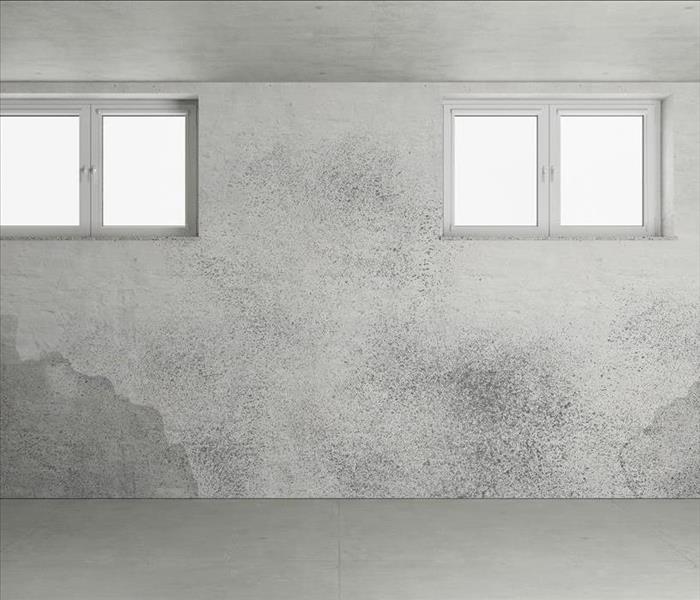 A professional can determine the source of the mold in a safe manner. Therefore, a mold damage restoration specialist should be contacted to assess an
A professional can determine the source of the mold in a safe manner. Therefore, a mold damage restoration specialist should be contacted to assess an
What is Mold?
Mold is fungus that thrives on damp or decaying organic matter. It comes in many varieties, can be found both indoors and outdoors, and can survive in any climate during any time of year. Mold spores are everywhere. Basically, we are constantly exposed to molds.
How Does Mold Grow?
In order to grow indoors, mold needs a source of moisture, a food source, and protection from the sun. Bathrooms provide countless sources of moisture from sink to toilet, pipes in the walls, the windows, through the ceiling, and even in the air. Mold thrives in both wet areas and areas with a high level of water vapor in the air. The elevated humidity levels of bathrooms provide ample moisture for mold to grow.
Mold eats matter having particles that were or are still alive. In a bathroom this includes dirt, cotton, dust, hair, skin cells, wood, paper, and soap. Finally, bathrooms are often windowless or have very small windows, effectively protecting the mold from the sun. In sum, the moisture, food, and protection from the sun are all in ample supply in a bathroom. Thus, bathrooms are at risk when it comes to mold damage.
What are the Signs of Mold Damage?
Mold can grow within 24 to 48 hours of being exposed to damp surfaces. Mold rapidly reproduces and spreads causing mold damage. Often, signs of mold are not obvious. If you see any of the following indications of mold, investigate the issue to prevent further mold damage and the need for intensive mold restoration to your home.
- Mold has a smell! Trust your senses when looking for mold. Mold will emit an old, musty smell.
- There is visible water in the bathroom. Check the bathroom for standing or slow-draining water. This type of water can leak into grout and shower tiles. Also, look for areas that are constantly damp or wet.
- The bathroom always feels moist. If a bathroom always feels damp in the air, even hours after it has been used, it is ripe for mold growth. These areas should receive circulation from a fan or window. Stagnant air allows mold to thrive.
- Dark spots are present. Dark green or black spots show up where there is mold damage. In the bathroom, you may find these spots in the grout, on the floor, on the ceiling. Since mold ordinarily begins by growing underneath surfaces, visible spots mean you most likely already have mold damage.
- The bathroom floor feels soft or spongy. Mold and water damage can rot floors. If the floor in your bathroom feels soft or spongy beneath your feet, the subfloor may be rotten due to mold damage.
- The walls are discolored or warped. Excess bathroom moisture can cause the walls to bubble, warp, and discolor. Any of these signs may indicate mold damage and the need for mold damage restoration.
- Constant allergies and sneezing. If someone in your home is frequently experiencing allergy-like symptoms no matter the time of year, you may need to inspect for mold. Other symptoms of mold exposure include runny nose, itchy eyes, fatigue, headache, and coughing. Persons with asthma are at particular risk for respiratory issues due to mold.
What Should Be Done Once Mold is Identified?
Mold is particularly likely to multiply in a bathroom because moisture, a food source, and the absence of sunlight are all present in abundance. Cleaning mold can release the mold spores into the air, causing it to grow and spread to other parts of your home. Additionally, mold can be extremely hazardous to your health.
A professional can determine the source of the mold in a safe manner. Therefore, a mold damage restoration specialist should be contacted to assess and remediate the problem. At SERVPRO of Deerfield Beach, we are here for you to tackle any and all mold damage restoration needs. Call us today to learn more!
Identifying Water Damage in Your South Florida Home
3/8/2023 (Permalink)
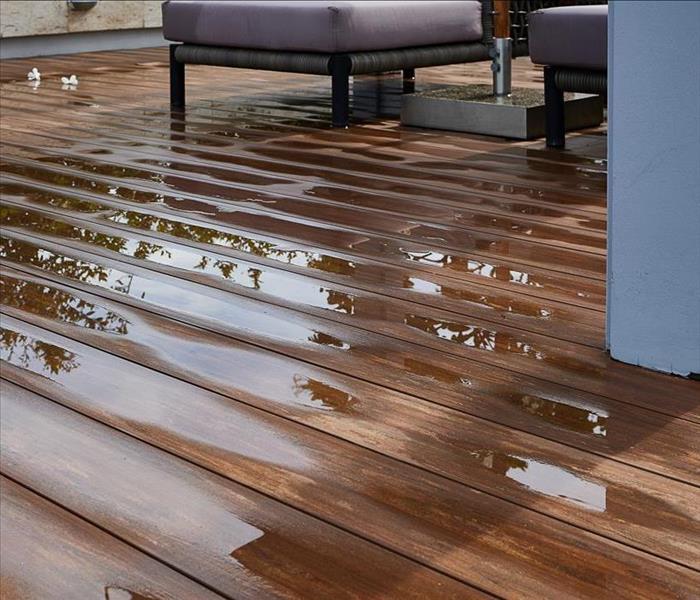 Do not allow water damage to go untreated. Early detection and resolution are the keys to water damage restoration.
Do not allow water damage to go untreated. Early detection and resolution are the keys to water damage restoration.
A recent federal assessment by the US Army Corps of Engineers found Florida to be among the most vulnerable areas at risk for storm-driven flooding. South Florida averages 52 inches of rain fall per year. South Florida lies close to sea level and is surrounded by major bodies of water, often leaving rainwater with no place to drain. The result of poor drainage is occasional flooding. Flooding can lead to severe water damage in your South Florida Home.
In addition to severe weather, water damage can be caused by leaky pipes, blocked drains, malfunctioning sprinklers, and a host of other reasons. Water damage is costly, making early detection and restoration vital.
How to Detect Water Damage
Water damage affects homes in a variety of ways. It discolors walls, warps floors, grows mold, and even weakens the foundation of homes. With early detection being critical, it is important to know how to look for water damage in your home.
- Odor. Water damage emits a persistent musty smell. It can come from mold behind walls and in areas that are frequently exposed to moisture. If a musty smell is present in your home, seek out the source of the odor. Look for wet spots and areas of mold growth.
- Stains on ceilings and floors. Water stains are a visible indicator of water damage due to a leak in your home. Stains on the ceiling can form from a leaky pipe or roof issue. Floor stains may be due to dishwasher or washing machine issues. Find the source of the leak.
- Warping and discoloration. Warped or sagging ceilings or floors are a tell-tale signal that there is water damage in your home. Discolored walls reveal an issue, as well. This is often a concern with moisture-rich areas in your home.
- Excessive water bill. An unusually high water bill can be a sign of a slow leak. Leaks are not always visible. This could require a plumber to investigate further. Early detection is key.
- Peeling paint. Look for peeling paint or wallpaper as a signal of excess moisture in an area and potential water damage. A dehumidifier may help. If the moisture in the air is not improved, seek professional assistance.
How to Prevent Water Damage
There are many things you can do to minimize the risk of water damage to your home. Protect and prevent water damage by following these guidelines.
- Know the sources of indoor and outdoor water. Learn where the water main shut off is located and how to turn it off.
- Periodically check for leaks. Look around and under sinks and appliances that use water.
- Maintain roof and gutters. Clean out and inspect gutters and roof.
- Use a water detection device. These devices can detect slow leaks and low moisture levels that may otherwise go unnoticed.
- Check water pressure. Too much water pressure can cause problems with pipes and hoses. Use a water pressure gauge to get an accurate reading.
- Disconnect your hose from the faucet. Standing water can lead to water damage in your home.
Water Damage Restoration
Do not allow water damage to go untreated. Early detection and resolution are the keys to water damage restoration. Contact a professional water damage restoration specialist to help you detect issues and restore your home. Employ prevention strategies to avoid future water damage.
As always, contact SERVPRO of Deerfield Beach for any and all of your water damage needs.
Is Your Water Heater Making Noises?
11/11/2022 (Permalink)
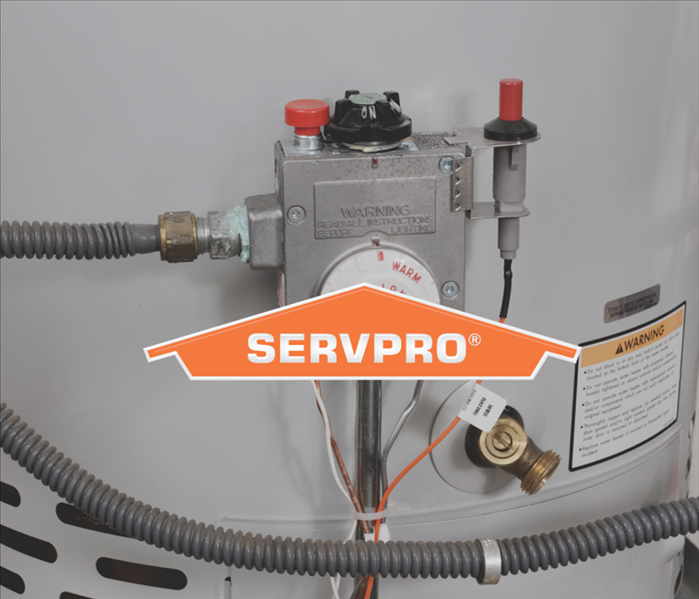 If you hear clanking and rumbling in your water heater, then it may be time for a flush.
If you hear clanking and rumbling in your water heater, then it may be time for a flush.
Is Your Water Heater Making Noises?
Water heaters can make all sorts of rattling and rumbling noises, but you may not actually have to replace it! The trick is figuring out if the sound is normal or not!
Sediment builds up over time and causes clanking and rumbling when the water heater is heating the water.
When sediment builds up over time, it can cause clanking and rumbling sounds when the water heater is heating. This is because the sediment gets in between the heating elements, causing them to rub against each other. A simple way to fix this problem is by doing a tank flush. A tank flush will clean out any excess sediment from your tank and should take care of this issue for you.
Another common reason for noise or vibrations coming from your hot water heater could be due to excessive rusting in one or more parts of the unit’s interior components like its outer shell or insulation blanket as well as its inner gas burner assembly components such as valves and pressure relief valve (PRV). Rusting causes corrosion on some areas inside these components which may lead them to expand more than others causing uneven wear that creates vibrations when hot water passes through those sections during usage.
There are two ways to flush the water tank, a complete manual flush, or an automatic flush that flushes the tank as it heats.
There are two ways to flush the water tank, a complete manual flush, or an automatic flush that flushes the tank as it heats. In either case, you may need to leave your home for about 30 minutes while the tank is flushed.
- Manual Flush: You'll perform this procedure by turning off power to your water heater and draining all water from it. Afterward, fill up another storage container with cool water and pour it into your hot-water heater until full so as not to cause any dry start issues when you turn things back on again (more on this later). This should take about 20 minutes per gallon removed from the system; if necessary, repeat until all gallons are replaced with fresh cool water. Then turn power back on, set thermostat where desired temperature lies between 120°F and 140°F (around 55°C) and allow unit three hours before using hot water again.
- Automatic Flush: When you heat up your system after emptying out tanks manually—or automatically via an electrical connection—you'll hear a pumping sound emanating from somewhere inside your unit as liquid travels through pipes at high speeds.
Flushing your water heater will save you money over time by saving energy and extending the life of your water heater.
Flushing your water heater is an easy way to save money on energy and extend the life of your water heater. The average homeowner spends a few thousand dollars on a new hot water tank, so if you flush regularly and prevent sediment buildup, you can save yourself thousands in replacement costs. Flushing your tank also prevents any clanking or rumbling noises that might occur when sediment builds up inside the tank.
If you hear clanking and rumbling in your water heater, then it may be time for a flush. A complete flush can help reduce the amount of sediment buildup causing the noises and save money on energy over time by extending the life of your water heater.
Electronics Cleaning After a Fire
10/5/2022 (Permalink)
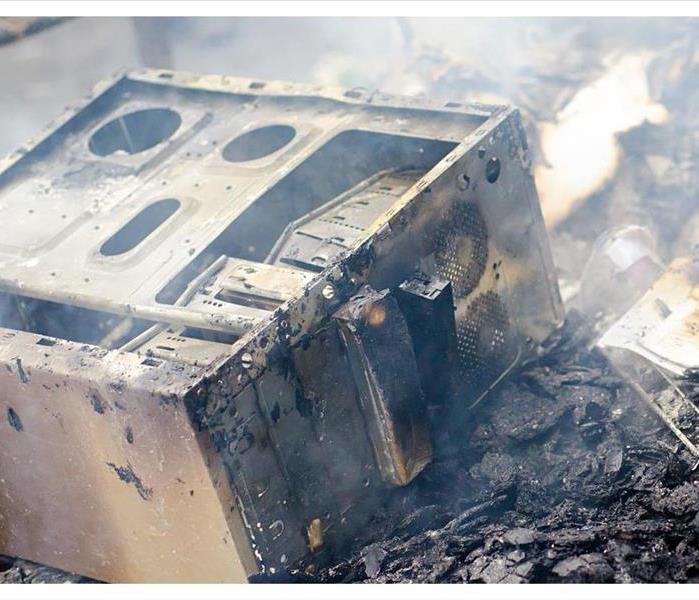 If you have experienced fire damage in your home or business there is a chance that your electronics will suffer smoke damage.
If you have experienced fire damage in your home or business there is a chance that your electronics will suffer smoke damage.
Electronics Cleaning After a Fire
A fire breaks out in your facility, and it results in smoke damage to your electronics. You're left with a few options: repair, replace, or clean up the mess.
Cleaning Electronics After Smoke Damage
- If you have a fire in your home or office, there is a good chance that your electronics will suffer smoke damage. All the smoke particulates and soot that are sent airborne during a fire are harmful to your electronics.
- The best way to clean these devices is with distilled water and non-abrasive cleaning products. It's also important not to use any materials that may scratch or otherwise damage the surface of your device—such as paper towels, lint-free cloths, or Q-tips (they're too abrasive).
- Once all the visible dirt has been removed from the exterior surfaces of your electronic device(s), turn them off and allow them to cool down for at least an hour before turning them back on again.
Electronics Restoration Is Possible
You might be thinking, "I'm not sure what to do with my electronics. If a fire has damaged them, will they ever work again?" The answer is yes. Electronics restoration is possible and can be done by a professional if the damage was not too extensive.
A good way to get started is by bringing your items in for an inspection before attempting any cleaning yourself. An expert will be able to give you an idea of how much work it will take and whether it's even worth trying anything at home before taking them to someone who knows what they're doing.
Getting electronics cleaned up after a fire improves the safety of your facility, reduces downtime, and limits losses.
After a fire, getting your electronics cleaned up is critical. There are several reasons why:
- Safety is a big concern. A fire in an electronics manufacturing facility can get out of control very quickly, and if there's dust or soot all over those sensitive components, it could cause another fire to start.
- Electronics cleaning reduces downtime. The longer you wait to get your equipment cleaned up, the more time you lose from production—and the more money that gets lost in the process!
- Electronics cleaning limits losses by preventing fires from starting again due to soot buildup inside of protective casing or wiring insulation.
Conclusion
If you’ve experienced a fire, there’s no doubt that you have a lot on your mind. But don’t forget about the importance of cleaning electronics after smoke damage. By getting your equipment cleaned up right away and repaired as soon as possible, you can avoid costly losses, improve safety at your facility and limit downtime for employees. It might seem like an expensive proposition in the moment, but it will save you money in the long run!
We recommend contacting a professional company such as SERVPRO for help with restoring electronics after smoke damage. They have years of experience helping businesses recover from fires, so they know exactly what needs to be done to get everything up and running again ASAP!
Does My Commercial Insurance Policy Cover Floods and Hurricanes?
10/1/2022 (Permalink)
 Damage from flooding is different from hurricane damage. In many cases, the damage caused by hurricanes results from storm surges and rising water.
Damage from flooding is different from hurricane damage. In many cases, the damage caused by hurricanes results from storm surges and rising water.
Is Flooding And Hurricanes Covered By My Commercial Insurance Policy?
Business owners in Hillsboro Beach, FL, might think their commercial insurance covers damage from hurricanes and floods. In many cases, though, you need to purchase separate coverage. Here are a few types of damage for which you may need separate storm insurance.
Hurricane Damage
This type of insurance coverage is currently a mandatory deductible in 19 states and the District of Columbia. It is a percentage deductible based on the value of your property. The cost of this coverage varies depending on your provider and where your property is located in relation to the coastline.
Hurricane insurance typically covers your building or structure and its contents for cleanup and storm damage restoration, including:
- Inventory
- Computers
- Electronic equipment
- Furniture
- Fixtures
- Cargo
Check your policy to see if passenger vehicles and machinery are included. Often, you need a separate policy to cover these items.
Wind and Hail Damage
Insurance coverage for hail and wind damage is included in standard property insurance for most of the country. In coastal areas, business owners may need to purchase separate storm insurance for these types of perils. Wind and hail damage may be covered under a hurricane policy.
Flood Damage
Damage from flooding is different from hurricane damage. In many cases, the damage caused by hurricanes results from storm surge and rising water. When damage results from water on the ground, it is considered flood damage.
You can purchase flood insurance through the National Flood Insurance Program, or NFIP. The program is managed by FEMA and offers insurance in participating communities through a network of companies.
If your business is in a high-risk flood area and has a mortgage through a government-backed lender, you must have flood insurance coverage.
It's best to review your policy from time to time to ensure you have the right storm insurance for the types of perils that can happen to your Hillsboro Beach, FL, business.
The Importance of SERVPRO's Always Available Rapid Response Teams
9/1/2022 (Permalink)
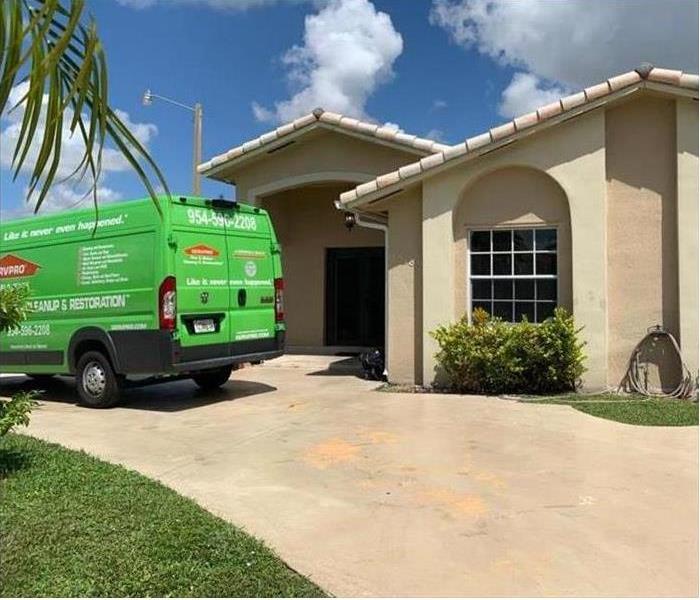 Whether the problem stems from water, fire or mold, SERVPRO’s fast response makes them a preferred vendor for most insurance agencies.
Whether the problem stems from water, fire or mold, SERVPRO’s fast response makes them a preferred vendor for most insurance agencies.
SERVPRO's Always-On Rapid Response Teams Are Critical
When any business suffers a structural disaster, the speed with which a team of fix-it professionals can begin making repairs is critical. An ability to handle the problem with haste is important to reducing damage. Therefore, having a 24 hour, round-the-clock restoration team available is a huge advantage. Here are some things worth knowing about SERVPRO’s rapid response abilities.
Elements of SERVPRO’s Speediness
Because they are designed with timeliness in mind, you should expect:
- Emergency calls to receive a response within an hour
- Fast site arrivals, a benefit of their more than 1,700 North American locations
- Inspections completed within 4 hours
Briefings delivered within 8 hours
Whether the problem stems from water, fire or mold, SERVPRO’s fast response makes them a preferred vendor for most insurance agencies. Being always open means repairs can begin even in the middle of the night. That’s the power of SERVPRO’s 24 hour service.
Importance of SERVPRO’s Speediness
Imagine an office in Boca Raton, FL, experiences a broken pipe or natural flooding. The longer it takes to clean up, the greater the level of destruction. Within minutes, water can seep into drywall, carpeting and filing cabinets. Additionally, computers and other electronic equipment are likely to be ruined.
Within a day, additional issues may surface. Metal can begin to tarnish. Cubicle walls may become compromised and need to be thrown away. A distracting, unpleasant smell could start to develop.
Between two days and a week after the incident, mold may start growing. Wood floors might begin warping. Contaminated water will have probably spread, posing a health risk to employees. The cost of building rehabilitation will have grown exponentially.
Water damage is just one scenario where the passage of time compounds problems. The same level of increased trouble occurs when delaying action under other scenarios.
Having a 24 hour team available to react to the most common types of office disasters is a true advantage. When calamity strikes at any hour, contact SERVPRO for prompt service.
What Could A Water Leak Be Costing You?
9/1/2022 (Permalink)
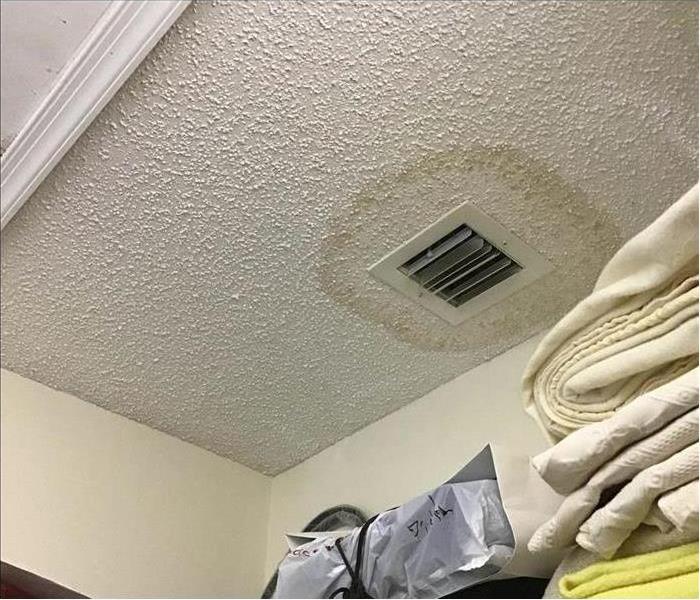 If you notice signs of a water leak, it is important you call our SERVPRO team as quickly as possible, it can quickly grow into big mold damage.
If you notice signs of a water leak, it is important you call our SERVPRO team as quickly as possible, it can quickly grow into big mold damage.
How Much Could A Water Leak Cost You?
While some leaks are very obvious and easy to discover, smaller leaks are often left undetected. Even when you're aware that there might be a problem, leaks behind walls, or in the ceilings or floors can be difficult to find. There are many ways a water leak in your building in Pompano Beach, FL, could be costing you money.
1. On Your Water Bill
The most obvious and direct way a water leak can cost you money is on your water bill. A slow dripping leak can waste between seven to ten gallons of water per day. Severe leaks can waste closer to ninety gallons per day. This all adds up on your water bill. By not addressing small leaks, you are wasting money. Take the time to fix leaks as you discover them. The cost of the repair will likely be less than the amount of money wasted by allowing it to continue to leak.
2. In Equipment Repairs or Upgrades
Leaks left unaddressed could lead to the need for pipe repairs and plumbing upgrades sooner than you would have needed them. A small leak can lead to a pipe break if allowed to go on long enough.
3. In Damages
Broken or leaky pipes can lead to damage to the structure of your building. Pipes are generally hidden behind walls or under floors. When a leak goes undetected, this allows time for the water to seep into the building materials. Water-soaked floors and walls can be susceptible to mold, often requiring extensive cleanup and repairs or rebuilding. Water damage specialists can help you recover from large leaks that cause major damage.
In the age of bills being automatically paid or deducted from bank accounts, it is still a good idea to review monthly charges for utility bills. A sudden spike in your water bill could be a clue that you have a water leak hidden somewhere. Consult a plumber to help locate the source of the leak and fix it as soon as possible to avoid wasting more money.



 24/7 Emergency Service
24/7 Emergency Service









